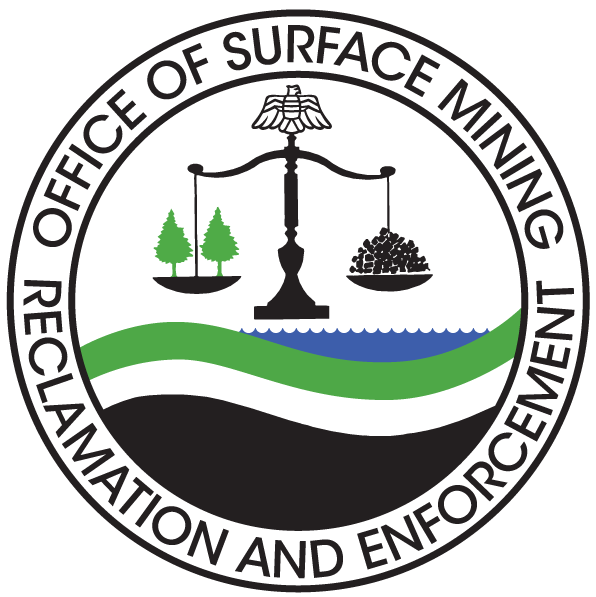Watersheds
Watersheds are geographic regions that drain to the same body of water (from higher elevations to lower elevations). Each stream, river, lake, ocean etc. has its own watersheds and can be a part of a watershed for a larger body of water. Watersheds include both surface and groundwater.
Watershed Cooperative Agreement Program (WCAP)
The Watershed Cooperative Agreement Program (WCAP) is an OSMRE program that supports local watershed restoration efforts by providing funds to small watershed organizations.
WCAP funding is typically capped at a maximum of $100,000 per project to complete local acid mine drainage (AMD) reclamation projects. To be eligible for WCAP funding, an organization must be a not-for-profit organization that is tax exempt under 26 U.S.C. 501(c)(3) of the Internal Revenue Code and project sites must meet eligibility requirements outlined in SMCRA Section 404.
The FY 2022 Notice of Funding Opportunity (NOFO) for WCAP is available on Grants.gov until September 20.
Additional information on WCAP can be found in the OSMRE Federal Assistance Manual (FAM):
- Watershed Cooperative Agreement Program
- The Application Process for a Watershed Cooperative Agreement
- Application Review and Processing for a Watershed Cooperative Agreement
- Amendments and Post-Award Changes for a Watershed Cooperative Agreement
- Performance and Financial Reporting for a Watershed Cooperative Agreement
- Closing a Watershed Cooperative Agreement
Examples of Recently Completed WCAP Projects
Period of Performance: 2018-2020
The State of Iowa partnered with Pathfinders RC&D, who regularly attended progress meetings and promoted the project and partnership through its electronic newsletter, media releases, and monthly updates to the Soil and Water Conservation Districts and County Supervisors. The project site is located in Davis County, Iowa and is 34 acres in size. Acid Mine Drainage from this area directly impacts an un-named tributary to Salt Creek.
The project involved reclaiming a site that was a source of acid forming materials that degraded the immediate habitat and a nearby water body through erosion, acidity and mineral deposits. The site was stabilized through the neutralization of the acid forming material and establishment of vegetation to stabilize the slopes.
Period of Performance: 2017-2020
The Ilesboro Road project was completed in 2020 through the Raccoon Creek Partnership with the Ohio Department of Natural Resources (ODNR), Division of Mineral Resources Management and the Ohio University Voinovich School of Leadership and Public Affairs.
The project was funded in 2017 as a land reclamation project that reclaimed thirty-four acres of abandoned spoil piles and two abandoned pits in Hocking County, Ohio. Run-off from the spoil piles and large amounts of stagnant acidic pit water was infiltrating into the groundwater table and contributing large sources of AMD to the Raccoon Creek watershed. The spoil was regraded with an alkaline addition during backfill. The acidic overburden was also "capped" with a clay liner to prevent water infiltration and further groundwater degradation.
The project has successfully lowered the acidity and metal concentration in the West Branch of Raccoon Creek.
Period of Performance: 2019-2020
The Western Pennsylvania Conservancy (WPC) installed a new passive treatment system to collect and treat two separate discharges along Cherry Run in Elk County, Pennsylvania. These discharges are coming from abandoned deep mine entries. WPC worked with the PA Department of Environmental Protection Bureau of Abandoned Mine Reclamation (BAMR) to abate the discharges, with funding support from BAMR, OSMRE, Trout Unlimited, and a local fundraising campaign. BAMR also finished a project immediately adjacent to the WPC Cherry Run Treatment System project during the same time frame. When fully complete, these projects will have the potential to completely restore Cherry Run and to help restore the larger watershed of the Bennet Branch of the Sinnemahoning.
This project was originally funded by OSMRE in 2015, WPC required additional funds to complete the project and an amendment to the WCAP was awarded in 2019. The work was completed in the summer of 2020. With the completion of the project, it is anticipated that seven miles of stream will be restored to wild trout fishery.
Period of Performance: 2020
The Beaver Creek at Auman Road Passive AMD Treatment Project is located in a headwater tributary to Beaver Creek of the Big Sandy Creek of the Cheat River in Preston County, West Virginia. This $131,025 WCAP was awarded to the non-profit watershed organization, Friends of the Cheat (FOC), in 2019 to design and construct a passive treatment system to remediate the last untreated sources of AMD impacting Beaver Creek. Beaver Creek has been the subject of a number of AMD remediation projects in the past. These prior projects have contributed to the recovery of local aquatic life such that Beaver Creek contains fish and other aquatic species.
Through this WCAP and additional partner funding, FOC designed and constructed two limestone leach beds, two settling ponds, and a wetland to neutralize the pH of the discharges and remove excess iron, aluminum, and manganese. Construction of this system was completed in 2020 through the funding provided by OSMRE WCAP and West Virginia Department of Environmental Protection's Watershed Improvement Branch through the Clean Water Act Section 319 program, as well as in-kind services provided by FOC. This treatment system aimed to reduce the acidity and metal load contributed by these AMD discharges by 80% and has exceeded this goal for acidity and aluminum, with a similar iron reduction predicted as the wetland plants become fully established.

